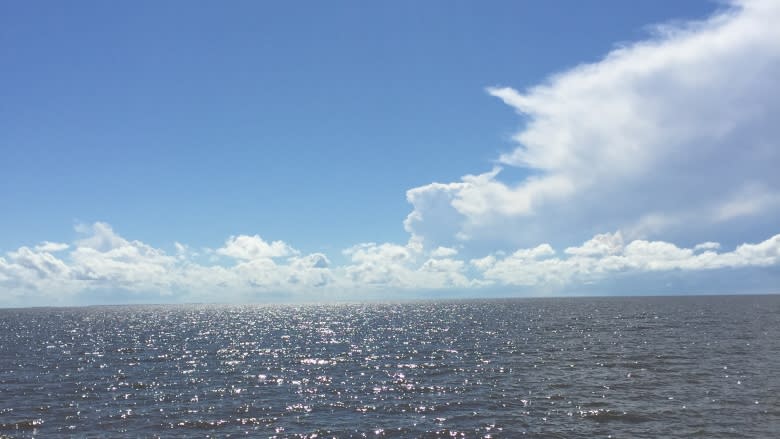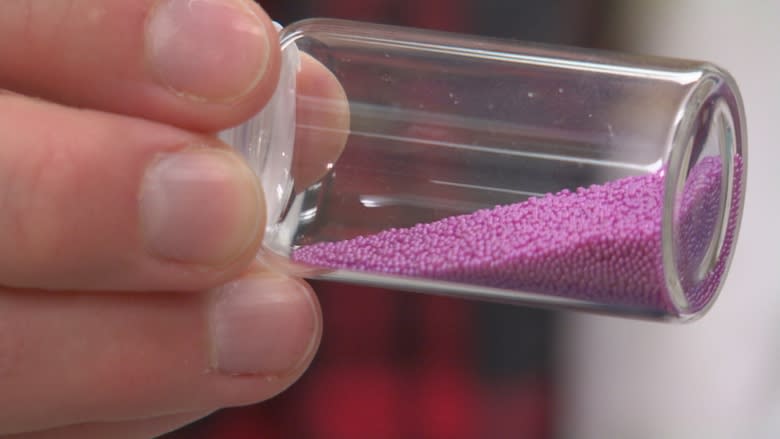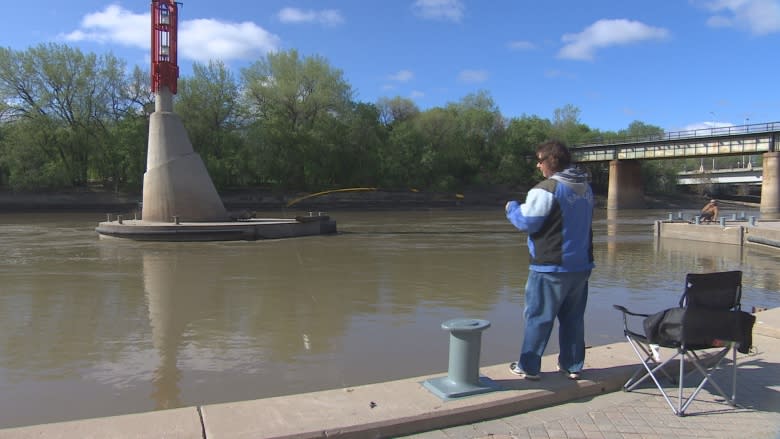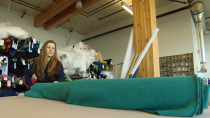Manitoba rivers feed 400M pieces of microplastic into Lake Winnipeg every year
The waste waters of the Assiniboine and Red rivers are bringing 400 million pieces of tiny plastic into Lake Winnipeg every year, but most of it is thin, wiry and so small that even the avid angler or beachgoer probably doesn't know it's there, new research suggests.
"If you have a cottage there you wouldn't notice," said Sarah Warrack, a master's student at the University of Manitoba whose research on microplastics found in Manitoba fish, rivers and Lake Winnipeg sheds light on a developing problem in freshwater ecosystems around the world. It was published in the most recent issue of Proceedings of Manitoba's Undergraduate Science and Engineering Research.
"The problem is plastic itself and we rely very heavily as a society on plastic. It's cheap, it's easy," she said. "Microplastics are everywhere and they are not a problem that's going away."
Warrack found microplastics at every site she sampled on the Assiniboine and Red Rivers — The Forks had the most — and the stuff turned up in nearly every fish she dissected. The research also suggests commercial toiletry products, synthetic clothing and waste water treatment plants in Winnipeg could be the main culprits.
"I think what this tells us is that over time, we've had a sort of a disregard for what we put into our environments, especially things we can't see," said Mark Hanson, Warrack's supervisor in the department of environment and geography at the U of M.
"If you don't see it in the water, you don't think it's a problem," he said. "Next time you're on the beach, take a look, I am sure you will find stuff, fine little particles sort of grinding away."
Banned in toothpaste, face scrubs
Microplastics are five millimetres in diameter (about the size of a sesame seed) or less, and fall into a few different categories: microbeads or pellets, which are found in some crafting products and exfoliating bath and body scrubs; fragments that are jagged and may have broken off of larger plastic debris; foams that are spongy and light; fibres from synthetic clothing; and films that are thin and may come from things like plastic bags.
Effective this past January, the Canadian government banned toiletry products containing microbeads — such as toothpaste, skin cleansers and exfoliants — from being made or imported in the country, citing potential environmental concerns.
The ban on the sale of those products takes effect on Canada Day this year, although natural health products and non-prescription drugs containing microbeads will be allowed to be sold until July 1, 2019.
"Don't use those things to wash your face," Warrack said. "Don't litter, use reusable cups if you're going somewhere like Starbucks. Try to wear clothing that is all natural fibres — like cotton, there's bamboo out there, wool — and I would say don't use things that contain microbeads."
Hanson said it's still very early days for microplastic research, but so far he doesn't believe the evidence showing it's harmful for humans or larger animals is compelling.
"If you think of a fish. It's a large animal … it's eating all sorts of things it has to ingest. Bones, scales. Ingesting microplastics is going to be low on its list of concerns," Hanson said.
There's so much microplastic floating around in the atmosphere that chances are you inhaled a fibre or two this morning, but Hanson says it won't hurt you.
That's not to say filter-feeding snails, mussels, tiny translucent aquatic invertebrates or other small creature couldn't face issues. The research on this stuff is still in its infancy.
One thing that is clear is research out last year that showed Lake Winnipeg had about five billion pieces of microplastic floating in its surface waters — greater densities than Lake Superior and Lake Huron.
Levels were also comparable to Lake Erie, despite the fact that nearly 10 times as many people live on or near Lake Eerie's shores than do on Lake Winnipeg.
That research found the majority of plastic in Lake Winnipeg comes in the form of microfibres that come off clothing such as fleece in the wash. And Warrack's research found the same thing: 89 per cent of her plastic samples were microfibres.
Microplastics in river waste water
Warrack built on those findings by looking at where microplastics in the lake are coming from, and she opened up some fish to see whether the tiny beads and fibres were also turning up in their bellies.
She analyzed 17 sauger and carp caught in the Red River at Selkirk Park. About half of the sauger contained at least one microplastic while nearly all carp, which primarily feed on river and lake bottoms, contained seven pieces on average.
She strategically sampled water at five sites on the Red and Assiniboine rivers located upstream and downstream from Winnipeg's three waste water treatment plants — the North, South and West End Water Pollution Centres.
Microplastic was found at every sample site; the highest amounts were found on the Red and Assiniboine River in June, which lined up with times with the highest discharge of raw waste water from treatment plants, the report states.
There was more floating in the surface waters of the Assiniboine (1.2 million pieces on average per square kilometre) than in the Red (806,000).
"We found very high densities of microplastics in those rivers — that's basically due to the waste water treatment plants releasing their effluent into it," Warrack said.
'A lot of Styrofoam,' plastic at The Forks
The site with the most microplastic "by far" was at the confluence of the two rivers at The Forks in downtown Winnipeg. There was also a lot more larger plastic litter at that site compared to others.
"You see a lot of Styrofoam, which I find weird, and a lot of cigarette buts, which again, there's plastic probably in the filter itself," she said.
Water samples were also drawn from a sixth site on the Nelson River that flows north out of Lake Winnipeg and past Norway House Cree Nation. Warrack was surprised to find that only about one per cent of microplastics flowing in were then flowing out the north basin.
"We're not quite sure what's happening there," Warrack said.
Warrack said waste water treatment plants manage to filter out about 90 per cent of all microplastics that are flushed or sent down drains in homes. The remaining 10 per cent ends up in local rivers that flow north and transport the plastics into Lake Winnipeg, she added.
That translates to one microplastic for every one million litres of treated water discharged into the river. For comparison sake, an Olympic swimming pool holds about 2.5 million litres of water.
It isn't clear yet if waste water effluent is the main source of microplastics in Lake Winnipeg, but Warrack's research suggests that could be the case, as do past studies that have shown treatment facilities in other places are better at catching microbeads as opposed to the fibres that make up the bulk of microplastic in Lake Winnipeg.
Moving forward, Hanson and Warrack hope to get a better grasp on how all that plastic is behaving once it's in Lake Winnipeg — whether most of it is at the surface, like what they've seen so far, or whether an ocean of tiny plastic is blanketing the lake bottom.
In the meantime, an important takeaway from her research is one for the consumer.
"They're [microplastics] everywhere but maybe we can try to mitigate that problem by just making better choices," Warrack said.












